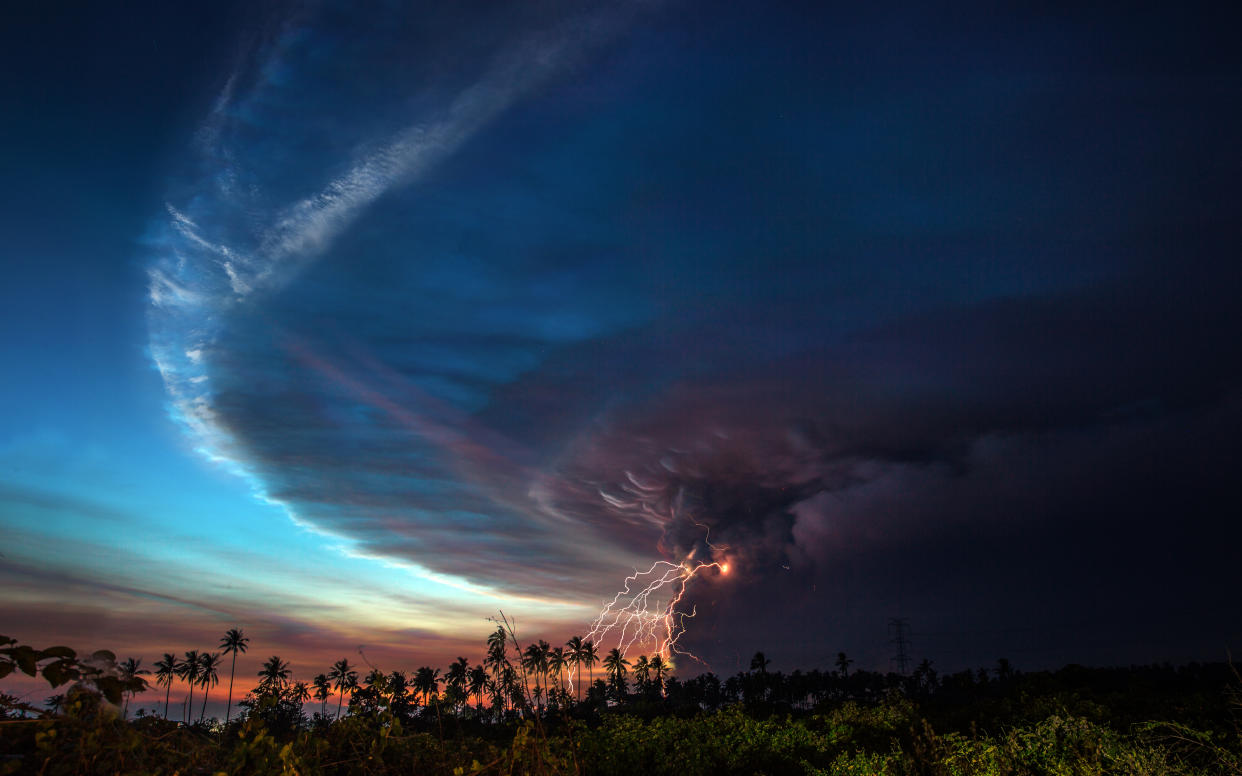Human carbon emissions ‘now worse than deadly ancient volcanic period’

Fifty-five million years ago, volcanoes belched great waves of carbon into the ocean over thousands of years – in an event sometimes compared to human carbon emissions.
But new research shows that the power of nature was not even close to what human beings are doing today.
In the Paleocene-Eocene Thermal Maximum (PETM), soaring CO2 levels raised Earth’s temperature by up to eight degrees, causing the seas to become acid and killing many marine species.
Read more: Antarctic records hottest temperature ever
Carbon pulses lasting for more than 5,000 years added 14.9 quadrillion metric tons of carbon to the oceans.
But a new study by Columbia University shows that humans are introducing carbon at a speed three to eight times faster than the PETM.
Lead author Laura Haynes, who did the research as a graduate student at Lamont-Doherty Earth Observatory, said, "We want to understand how the earth system is going to respond to rapid CO2 emissions now.”
"The PETM is not the perfect analog, but it's the closest thing we have. Today, things are moving much faster."
The study was published in the journal Proceedings of the National Academy of Sciences.
Read more: Scientists drill into mysterious lake buried 3,500 feet under Antarctica
Researchers at Columbia University's Lamont-Doherty Earth Observatory examined ocean conditions 55.6 million years ago.
Scientists have known about the PETM carbon surge for years, but until now, have been shaky on what caused it.
Up to now, marine studies of the PETM have relied on scant chemical data from the oceans, and assumptions based on computer models.
The authors of the new study cultured tiny shelled marine organisms called foraminifera in seawater that they formulated to resemble the highly acidic conditions of the PETM.
They recorded how the organisms took up the element boron into their shells during growth.
They then compared these data with analyses of boron from fossilised foraminifera in Pacific and Atlantic ocean-floor cores that span the PETM.
This allowed them to identify carbon-isotope signatures associated with specific carbon sources.
Read more: Coronavirus shows us how the planet’s health is linked to our own
This indicated that volcanoes were the main source, probably from massive eruptions centered around what is now Iceland, as the North Atlantic ocean opened up, and northern North America and Greenland separated from northern Europe.
Today, human emissions are causing carbon dioxide in the atmosphere to skyrocket, and the oceans are again absorbing much of it.
Atmospheric levels have shot up from about 280 parts per million in the 1700s to about 415 today, and they are on a path to keep rising rapidly.
Atmospheric levels would already be much higher if the oceans were not absorbing so much. As they do, rapid acidification is starting to stress marine life.
Study coauthor Bärbel Hönisch, a geochemist at Lamont-Doherty said: “If you add carbon slowly, living things can adapt. If you do it very fast, that's a really big problem.
"The past saw some really dire consequences, and that does not bode well for the future. We're outpacing the past, and the consequences are probably going to be very serious."


